

Beirut
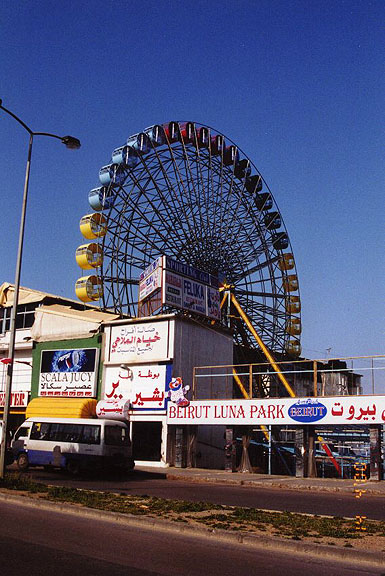
Luna Park on the Corniche
Beirut is divided along ethnic and religious lines. A fundamental division runs between the two hills on which Beirut was built: Lebanese Christians live mostly in Ashrafîyah, in East Beirut, while Lebanese Sunni Muslims live in Musaytibah, in West Beirut.
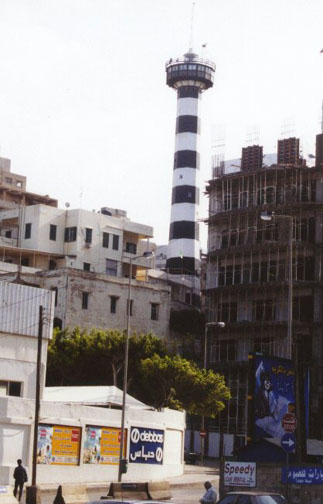
lighthouse in West Beirut
Lebanese Shiite Muslims and Palestinians, who are mostly Muslim, now live predominantly in southern areas of the city. This combination of ethnic and religious groups, and their spatial distribution, has contributed to the violence in Lebanon in general, and in Beirut in particular. Since the mid-1970s, Beirut existed as a war-torn and divided city; since 1991, the city has been under reconstruction.
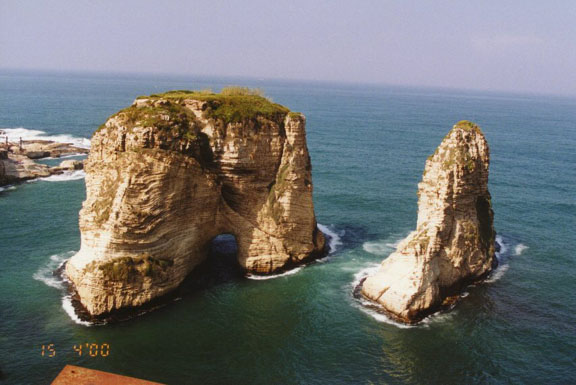
Pigeon Rocks
Beirut is a cosmopolitan city, with a mixture of European and Arab influences, but it is also a city suffering from the blights of poverty and warfare. Around the historic core of Beirut, areas of poverty have spread, particularly to the south, linking the city with adjacent suburbs. The city's organization is haphazard, with residential and commercial areas intermingled, and with high-rise buildings next to tenement slums.
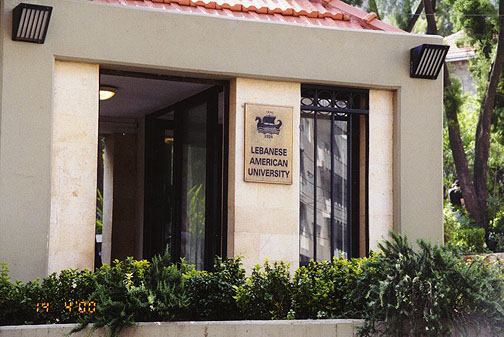
American University
On the city's northern edge, the port area dominates East Beirut; in West Beirut, important tourist facilities and institutions, including many of the city's hotels, foreign embassies, and the American University of Beirut, are located along the shore on the Avenue de Paris.
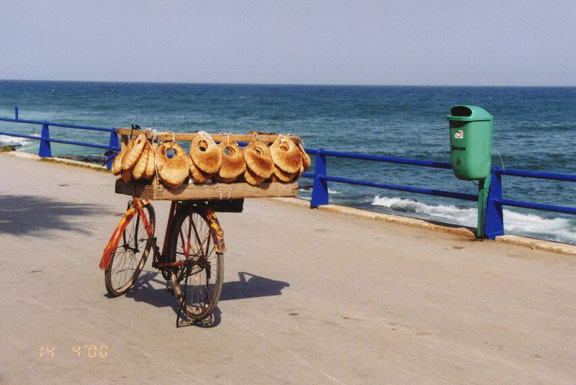
on the Corniche
The Avenue de Paris forms part of the Corniche, a wide boulevard that continues south along the Mediterranean and encircles much of the city. Avenue de l'Aéroport, a major thoroughfare, runs from the port area to the Beirut International Airport, 8 km (5 mi) south of the city's center.
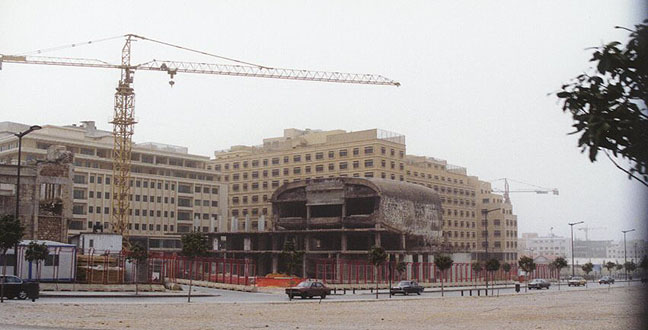
destroyed cinema along the green line
The city has other major north-south and east-west roads, although the east-west roads were blocked by the creation of the Green Line. This line, so named because it is depicted on maps in green, was the unofficial boundary dividing Beirut into Muslim and Christian sides during the violent period from 1975 to 1990. In that fighting many of the structures adjacent to the Green Line, including parts of Beirut's downtown area, were destroyed. The Hamra district in West Beirut, south of the American University of Beirut, has replaced the downtown area as the city's center.
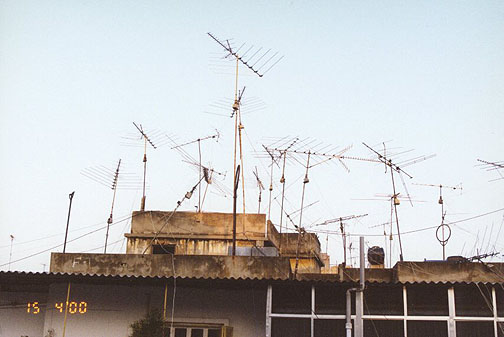
Beirut skyline
The southern portion of Beirut has also been affected by warfare. It is dominated by Shiite Muslims, Lebanon's poorest community, and suffers from overcrowding due to high birth rates, lack of housing, and the regular influx of Shiites fleeing the instability and violence of southern Lebanon. Another factor in this area is the presence of Palestinian refugee camps. These include the Sabra and Shatila camps, where many Palestinians were massacred in 1982 by Lebanese Christian militia members.
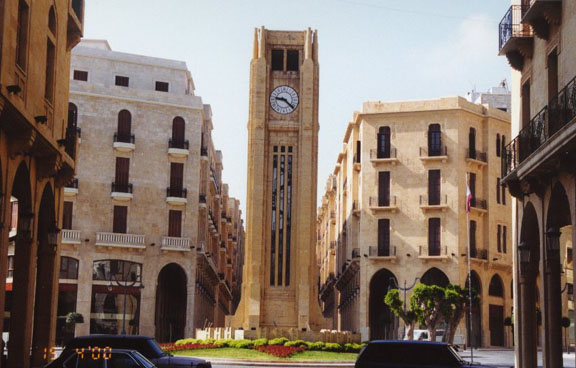
Clock tower in center of government area
With rapid growth since the 1950s, Beirut is now home to nearly half of
Lebanon's population; estimates exceed 1.5 million for the city. The figure is
inexact, however, since the last census for Lebanon was conducted in 1932. The
primary religions represented in Beirut include Islam, Christianity, and the
Druze religion. Maronites make up the largest Christian sect in the city, and
the majority of Islamic residents are Shiite Muslims or Sunni Muslims. The
Druze, whose beliefs are based in Islam but incorporate some elements of Judaism
and Christianity, live in West Beirut.
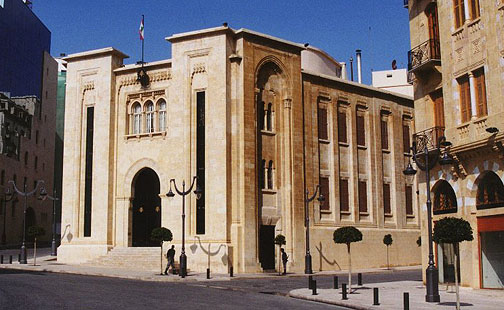
Legislative Building
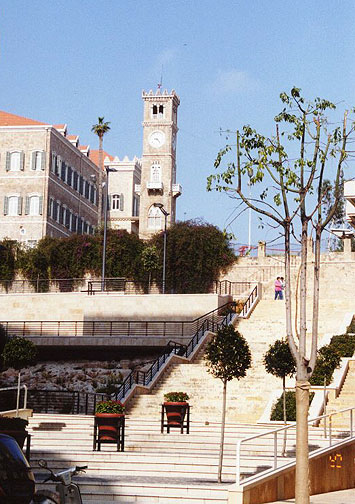
Executive office area
Starting in the 19th century, Beirut became both a center for Arab nationalist
thought and one of the most cosmopolitan cities in the Middle East. Beirut was
known as the most liberal of the Arab capitals, and it provided a safe haven in
the Middle East for Arabs who wanted to experience Western cultures. Beirut was
also a port of entry for the rest of the world. Some outside powers sought to
influence the region by promoting the interests of local Christians. To this
end, the Syrian Protestant University, later called the American University of
Beirut, was founded in 1866 by American missionaries. Fifteen years later the
Université Saint Joseph was established by French Jesuits. These institutions
served to bring the philosophies of Europe to the Middle East.
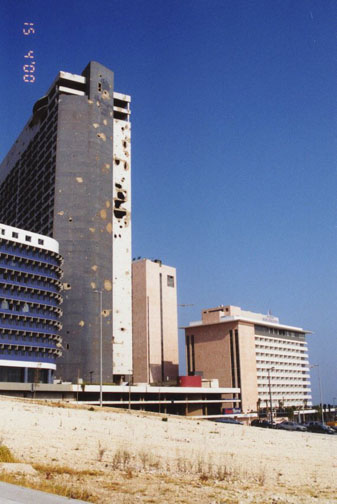
former Holiday Inn
At roughly the same time, Beirut became a meeting place for those from around the region who wanted to promote Arab rule for Arab lands. Beirut grew as a hub of Arab communication, in addition to being a center of international culture. The residents of Beirut took pride in calling their town the "Paris of the Middle East." When violence erupted in 1975, much of the cultural life and economic activity in Beirut came to a rapid end. Nevertheless, many educational institutions have survived. In addition to the American University of Beirut and the Université Saint Joseph, the city contains the Beirut Arab University (founded in 1960), the Université Libanaise (founded in 1951), and the Haigazian University College (founded in 1955), among others.
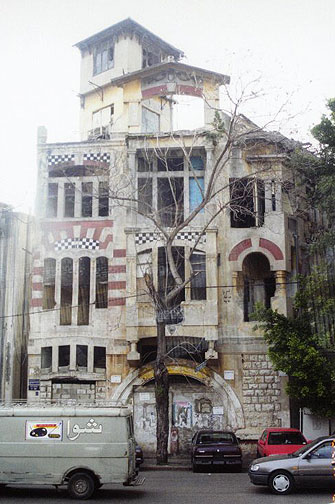
fine house
of the old style
(awaiting restoration)
Beirut is mentioned as far back as the 15th century BC; its name appears in the Tall al'Amârinah tablets. Prominence came when it was given the status of a colony of Rome in the year 14 BC, under the name Colonia Julia Augusta Felix Berytus. The original town was located in the valley between the hills of Ashrafîyah and Musaytibah. Under the Romans, Beirut was famous for its law school, which existed for more than 300 years. The Roman city was destroyed by a series of earthquakes, culminating in the year 551 AD. Arab invaders found little to suggest earlier development when they occupied the city in 635. King Baldwin I of Jerusalem conquered the city in 1110 during the First Crusade (see Crusades), although the city had little importance at that time. Primarily serving as a port for trade with Europe, the town's orientation was to the sea, so it was vulnerable to attack from the adjacent mountain area.
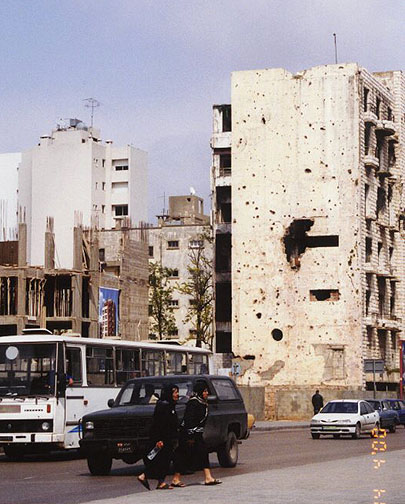
near the green line
The city changed hands several more times, its fortunes rising and falling with fluctuations in trade with Europe in spices and silk. In 1187 it was taken by Saladin, sultan of Egypt and Syria. After 1516 the region became nominally part of the Ottoman Empire, but the city was ruled by a variety of local powers. The town began to develop as commerce increased, and by the middle of the 19th century Beirut's population of about 15,000 had expanded beyond the city's walls. During this period of expansion, missionaries from the West and intellectuals of the Arab world began to shape the city.
On October 8, 1918, at the end of World War I, the city was captured from the Ottoman Empire by Allied forces under the command of the British general Edmund Henry Hynman Allenby. Beirut was then included in the mandate granted to France by the League of Nations. In 1920 the city was designated by the French to be the capital of the State of Greater Lebanon. The State of Greater Lebanon became the Lebanese Republic in 1926; it was not established as an independent republic, however, until 1943, and the French withdrawal was not completed until 1946. During this period Beirut absorbed many European elements, including architecture, language, and outlook. The Christian Lebanese were particularly influenced by the French. The city continued to prosper after the mandate ended, but urban growth was less controlled than during French rule. With the rapid development of banking and tourism industries, the city acquired great wealth, and, at the same time, a sizable underclass of urban poor. After the first Arab-Israeli war, which lasted from 1947 to 1949, many Palestinians entered Lebanon and established a large refugee community in Beirut.
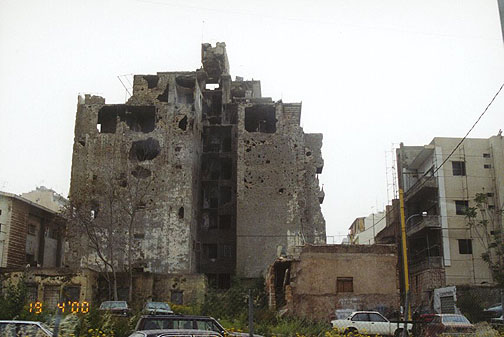
civil war damage
The Lebanese civil war, which erupted in 1975, completely divided Beirut. Beyond the division into East and West Beirut, the city was dominated by factionalism, with Sunnis, Shiites, Druze, Palestinians, Maronites, and other groups all controlling territory within the city. Many Lebanese fled the capital, and most services in the city collapsed. For example, supplies of power and water became unreliable, and garbage was dumped in a landfill in the Mediterranean, opposite the hotel district. In 1982 Israel invaded Lebanon and pursued the leaders of the Palestine Liberation Organization (PLO), who were operating out of Beirut. Refusing to surrender, the PLO leaders barricaded themselves in West Beirut, and the Israelis besieged the city. After much destruction, the PLO was evacuated to Tunisia, and the Israelis withdrew to the south.
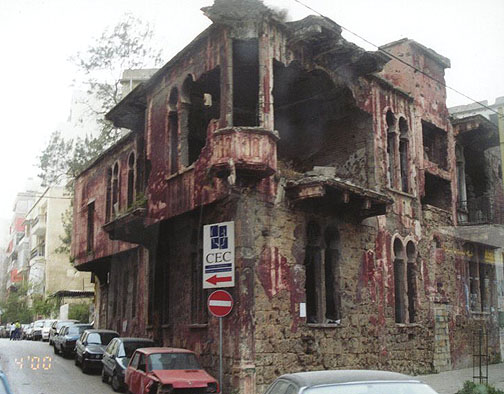
facades are saved to keep the old character of the city
The Multinational Force (MNF), including French, Italian, American, and British troops, stationed in Beirut after 1982, became the target of numerous terrorist attacks. Two bombings on October 23, 1983, killed nearly 300 members of U.S. and French forces. The MNF left Beirut in early 1984. In 1986 the government of Lebanon, representing a number of factions, invited the Syrian government to send troops to quell the fighting in Beirut. The Syrians began a period of rule that saw numerous shifts in alliance, and continued destruction. Fighting persisted in Beirut through 1990. In the early 1990s the situation in Lebanon became more stable, and ambitious plans for the reconstruction of the city were undertaken.
Contributed By: Shaul Cohen for Microsoft Encarta
![]()
![]()